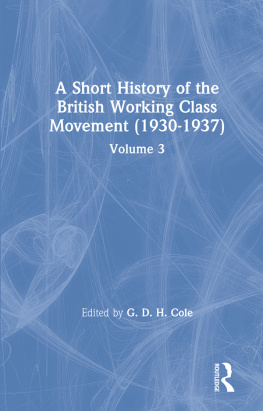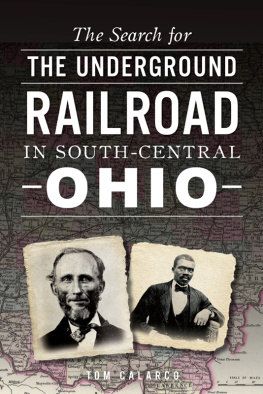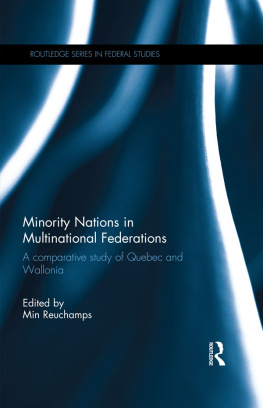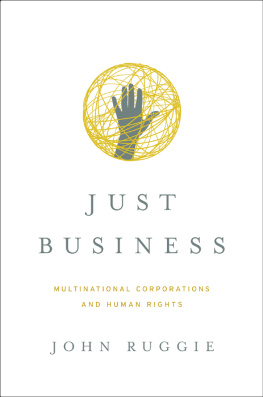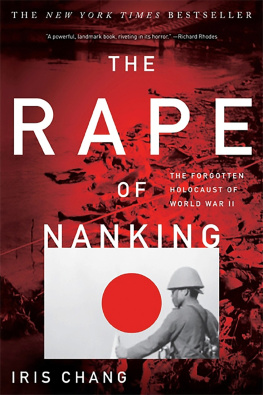First published 1988 by M.E. Sharpe
Published 2015 by Routledge
2 Park Square, Milton Park, Abingdon, Oxon OX14 4RN
711 Third Avenue, New York, NY 10017, USA
Routledge is an imprint of the Taylor & Francis Group, an informa business
Copyright 1988 Taylor & Francis. All rights reserved
No part of this book may be reprinted or reproduced or utilised in any form or by any electronic, mechanical, or other means, now known or hereafter invented, including photocopying and recording, or in any information storage or retrieval system, without permission in writing from the publishers.
Notices
No responsibility is assumed by the publisher for any injury and/or damage to persons or property as a matter of products liability, negligence or otherwise, or from any use of operation of any methods, products, instructions or ideas contained in the material herein.
Practitioners and researchers must always rely on their own experience and knowledge in evaluating and using any information, methods, compounds, or experiments described herein. In using such information or methods they should be mindful of their own safety and the safety of others, including parties for whom they have a professional responsibility.
Product or corporate names may be trademarks or registered trademarks, and are used only for identification and explanation without intent to infringe.
Library of Congress Cataloging-in-Publication Data
It, Takeo, 1895
Life along the South Manchurian Railway.
Translation of: Mantetsu ni ikite.
Includes bibliographical references and index.
1. Minami Mansh Tetsud Kabushiki Kaisha.
ChsabuHistory. 2. ChinaResearchChina
ManchuriaHistory. 3. It, Takeo, 1895
4. RailroadsChinaManchuriaEmployeesBiography.
5. Manchuria (China)Biography. 6. Minami Mansh
Tetsud Kabushiki KaishaBiography. I. Fogel,
Joshua A., 1950- . II. Title.
HE3290.M517613 1988 385'.065'518 87-322030
ISBN 0-87332-465-X
ISBN 13: 9780873324656(hbk)
Joshua A. Fogel
In November 1906, following the Russo-Japanese War, Japan acquired the South Manchurian Railway (SMR). Got Shimpei was named its first president, and he immediately made plans for inaugurating a Research Department. "Research" was something Got considered utterly essential to colonial management. Tokutomi Soh once said of Got: "Everyone has his own peculiarities. 'Research' is something that always hung close to Got like a briefcase." The Research Department began in April 1907 as a small agency and changed its name many times, at its height, around 1940, encompassing a total of 2,354 employees. It lasted for thirty-eight years, before the arrest of many of its main operatives by the Kwantung Army and Japan's defeat in World War II spelled its demise. Who came to work for it and why? How did they see themselves? To what use was their research put, and what did they think about that? These are a few of the questions to be addressed in this introduction.
With Japan as the major force in Manchuria after 1906, Got Shimpei proceeded with his master plan for colonial development through research. The SMR received a huge quantity of capital, 200 million yen, half from the government and half in a public offering. It was never simply a for-profit company, for the SMR had a sense of immense responsibility, of mission. Among other things, Got wanted to be sure Manchuria never ceased to be under Japanese control, and that necessitated the immigration of
The slogan he devised for his conception of colonial control has been the object of considerable discussion: buns teki bubi, or "military preparedness in civil garb." It records Got's words on the subject:
In short, colonial policy is military preparedness in civil garb; it is carrying out the hegemon's strategies under the flag of the kingly way. Such a colonial policy is inescapable in our time. What facilities, then, are necessary to see it through?
We have to implement a cultural invasion with a Central Laboratory, popular education for the resident populace, and forge other academic and economic links. Invasion may not be an agreeable expression, but [language] aside we can generally call our policy one of invasion in civil garb.... Certain scholars have said that the secret of administration lies in taking advantage of the people's weaknesses.... Insofar as the secret to administration does hang on the weak points of mankind's way of life and in fact has throughout history, it is that much more so with colonial policy.
No mincing of words here. A main research office was established in Dairen, a branch in Tokyo for the first project in January 1908, and the East Asian Economic Investigation Bureau (EEB) later that year. Both the human and natural sciences were to be researched, and a massive network of facilities took form in Manchuria and later in China proper. Got had been trained as a medical doctor in Germany, and the methodical, clinical approach to research problems became a hallmark of SMR research.
Got asked Professor Okamatsu Santar of Kyoto University, an expert in Chinese law, to head the Research Department. Okamatsu had led the team that researched the "old customs" of Taiwan when Got had been colonial civil governor there. But, Okamatsu had never run the kind of Research Department now envisioned for Manchuria, so Got sent him to Europe to study the operations of such an outfit. Manchuria was many, many times the size of Taiwan; it was not yet an outright colony of Japan; and the Research Department had not yet acquired the kind of staff needed for a comparable study of Manchuria. None
The next major project, begun in response to a suggestion of Shiratori Kurakichi (founder of the Tokyo University School of Sinology), was a research facility for the study of Manchurian and Korean history and geography. Only an age of imperialism could have brought together two such different personalities as Shiratori and Got. Shiratori was the quintessential scholar, whose only thoughts about contemporary China were scornful and con-descending.
Got and subsequent SMR heads were not pleased, and the facility was immediately closed in 1914. Shiratori removed the materials to the Faculty of Letters at Tdai and continued work for the next twenty years, producing another thirteen volumes of research. Got's displeasure was with the lack of colonial drive on the part of the pedants who had collected the documents with his money. Whatever scholarship their work may have achieved, he found little worth in it for Japanese colonization of the region under study. This mix of scholarship and colonial policy, buns teki bubi in Got's words, became the main research tradition at the SMR. Even though many of the researchers forgot this fact at times, the leaders never did. As Hara Kakuten has accurately noted, "research" organs were not established for the sake of scholarship, but to facilitate the management of Manchuria and the operations of the SMR.




